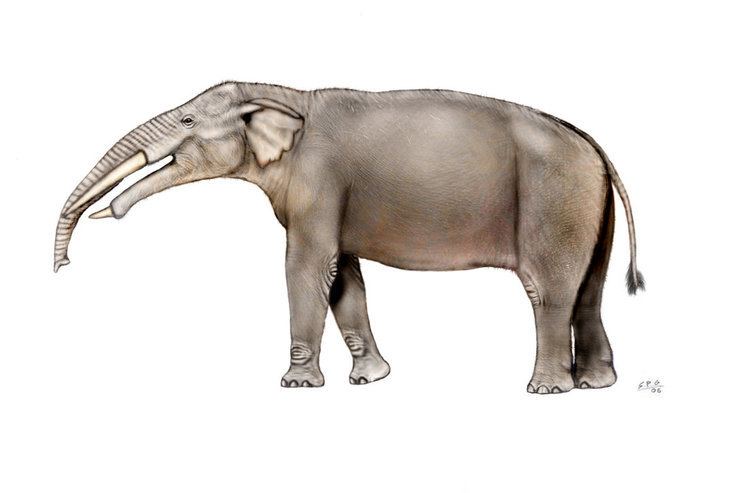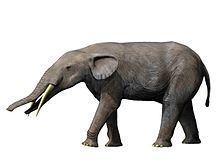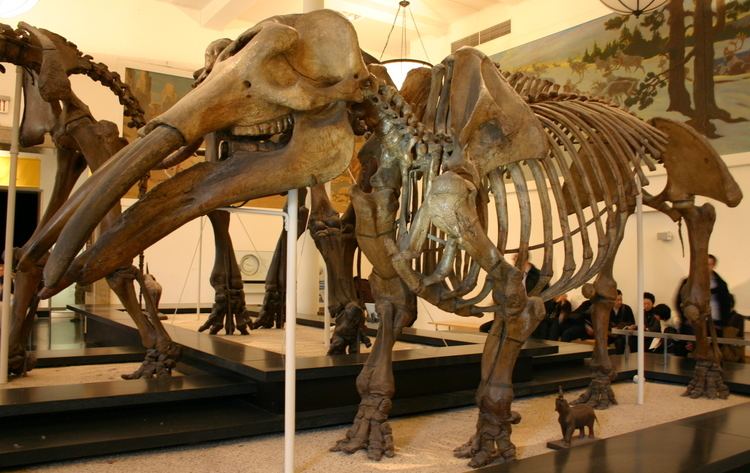Scientific name Gomphotherium Rank Genus | Phylum Chordata Family †Gomphotheriidae Higher classification Gomphothere | |
 | ||
Similar Platybelodon, Proboscidea, Gomphothere, Mammal, Deinotherium | ||
Gomphotherium (/ˌɡɒmfəˈθɪəriəm/; "Welded Beast") is an extinct genus of proboscid that evolved in the Early Miocene of North America and lived for about 12.4 million years from 13.650—1.2 Mya.
Contents

The genus emigrated into Asia, Europe and Africa after a drop in sea level (probably during the Tortonian epoch) allowed them to cross over. It survived into the Pleistocene, and its remains have been found in Sweden, France, Germany, Austria, Croatia, Kansas, Tennessee, China, Pakistan, Kenya and Bosnia and Herzegovina.

Proboscidea evolution of elephant early miocene gomphotherium
Description

G. productum is known from a 35-year-old male 2.51 metres (8.2 ft) tall weighing 4.6 tonnes (4.5 long tons; 5.1 short tons). Even larger is G. steinheimense, known from a complete 37-year-old male found in Mühldorf, Germany, which is 3.17 metres (10.4 ft) tall and weighed 6.7 tonnes (6.6 long tons; 7.4 short tons). It had four tusks, two on the upper jaw and two on the elongated lower jaw. The lower tusks are parallel and shaped like a shovel and were probably used for digging up food from mud. Unlike modern elephants, the upper tusks were covered by a layer of enamel. Compared to elephants, the skull was more elongated and low, indicating that the animal had a short trunk, rather like a tapir's. These animals probably lived in swamps or near lakes, using their tusks to dig or scrape up aquatic vegetation. In comparison to earlier proboscids, Gomphotherium had far fewer molars; the remaining ones had high ridges to expand their grinding surface. Gomphotherium inhabited dry wooded regions near lakes.
Taxonomy
The genus was erected by Burmeister (1837) and was assigned to Gomphotheriidae by Burmeister (1837), Qiu et al. (1981), Carroll (1988), Lambert and Shoshani (1998), Sach and Heizmann (2001), Sanders and Miller (2002) and Lambert (2007). Gomphotherium was considered paraphyletic by Lambert (2007). Serridentinus was named by Osborn (1923) and synonymized subjectively with Gomphotherium by Tobien (1972), Madden and Storer (1985), Shoshani and Tassy (1996), Lambert (1996), Lambert and Shoshani (1998) and Christiansen (2007).
The following cladogram shows the placement of the genus Gomphotherium among other proboscideans, based on hyoid characteristics:
